Powdery Mildew And Humid Conditions
Fungal plant diseases typically thrive in wet conditions. Most fungi require a thin film of water on the host plant for germination and penetration of the spores. Powdery mildews, however, do not require water droplets on the plant surface to grow, but it does flourish in humid conditions.
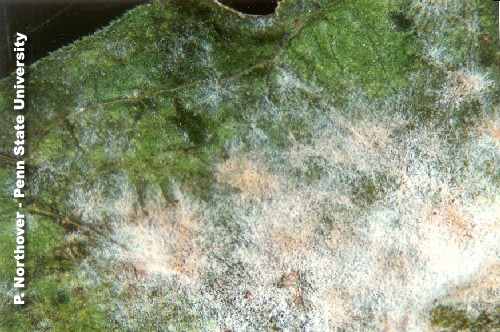
Figure 1
Powdery mildew of Phlox, caused by Erysiphe cichoracearume.
What are the Symptoms?
Powdery mildews are one of the easier diseases to recognize. They differ from other fungi as most of the fungus is outside of the plant as opposed to inside the host plant. As the name suggests, the masses of fungal spores (conidia) responsible for these diseases, give the plant the appearance of being coated with flour or talcum powder (See Figure 1). Areas of white to grayish growth (mycelium) can appear on young plant tissues (leaves, stem, and fruit), and can become severe enough that the entire surface is covered. As the mycelium ages, the mildew may take on a light reddish brown to gray appearance, the result of the production of fruiting structures (cleistothecia) (See Figure 2).
In addition to the growth over plant surfaces, symptoms of powdery mildew can range from symptomless to significant distortion of leaves, flowers, fruit, and even entire shoots on broad leaf plants. Many monocots become chlorotic and eventually senescent, and stunted. In the case of cereal crops, the quality of the grain may be reduced.
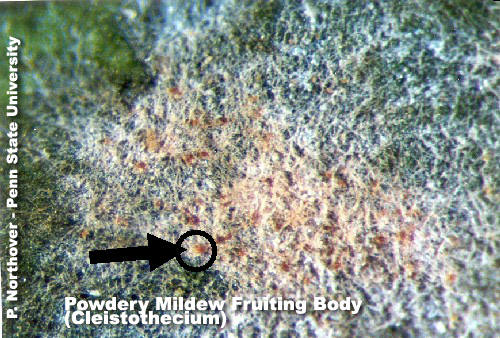
Figure 2
Fruiting bodies (cleistothecia) forming on Phlox leaves
Where Can Symptoms Appear?
This will vary by plant, but generally powdery mildew symptoms may be seen on plant surfaces in areas of dense plant growth (such as crowded plants in a greenhouse, in crops with extensive foliage (such as field peas), or in crops in moist sheltered areas.
Are all Powdery Mildews a Severe Problem?
Powdery mildews can have substantial effects on yield, as they rob the host plant of nutrients, reduce the photosynthetic process, increase respiration and transpiration, impair growth, and reduce yields.
Powdery mildews rarely kill their host plant, in fact some appear to be of little concern at all. Lilac powdery mildew can reappear year after year, with little impact. Others can be very damaging, such as those that attack many cereals and some fruit.
Do All Powdery Mildews Attack All Plants?
A wide range of plants in Manitoba are affected by the powdery mildews, including grasses and cereals (see Figures 3 and 4), legumes (See Figure 5), fruit (see Figures 5, 6 and 7), vegetables (see Figures 8, 9 and 10), bedding plants (see Figures 1 and 2) and trees.
The powdery mildews represent a large group of fungi, while very similar in appearance, can have very different host requirements. Some powdery mildew fungi can attack hundreds of species while others (such as Blumeria graminis) can be very host specific, restricting themselves to specific grasses, such as B. graminis f.sp tritici on wheat (see Figure 3) and B. graminis f.sp hordei on barley.

Figure 3
Powdery Mildew of wheat caused by Blumeria graminis f.sp. tritici
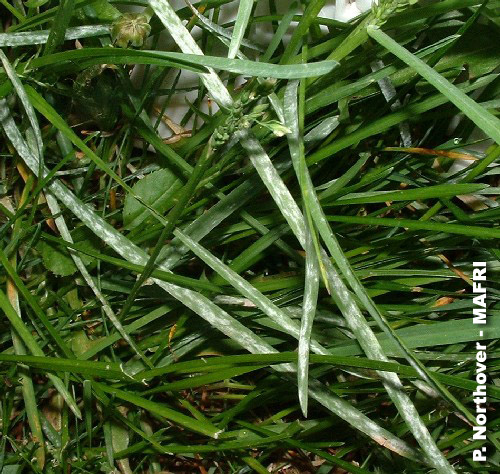
Figure 4
Powdery mildew of Agropyron spp. caused by Erysphe graminis
Management
There are a number of products that are available for control of powdery mildews, on a wider range of crops. Please consult the most recent editions of The Guide to Crop Protection, or contact MAFRD for further information.
References:
Agrios, G.N. 1997. Plant Pathology. NY: Academic Press.
Alexopoulus, C.J., C.W. Mims, and M. Blackwell. 1996. Introductory Mycology. NY: John Wiley and Sons.
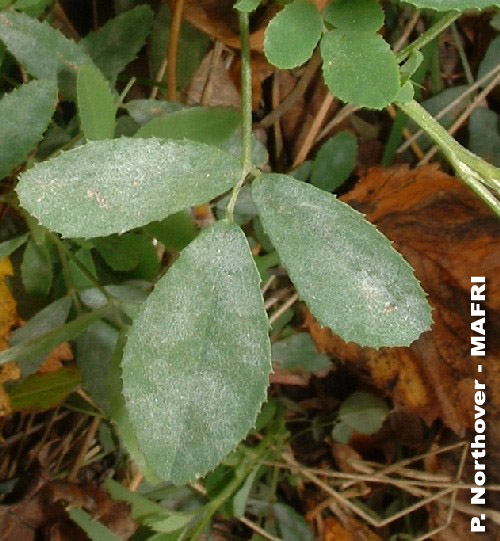
Figure 5
Powdery mildew of clover caused by Erysiphe polygoni
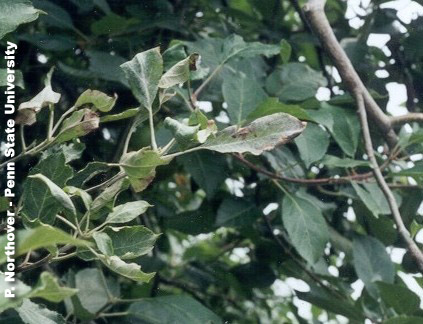
Figure 6
Powdery mildew of apple caused by Podospheara leucotricha
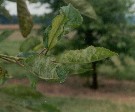
Figure 7
Powdery mildew of cherry caused by Podosphaera clandestina
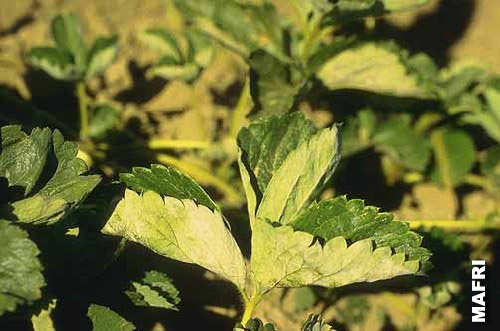
Figure 8
Powdery mildew of strawberry caused by Sphaerotheca macularis f. sp. fragariae; note the curling of the leaves

Figure 9
Powdery mildew of carrot caused by Erysiphe heraclei
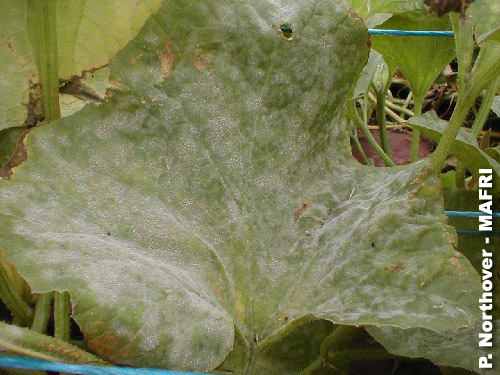
Figure 10
Powdery mildew of cucumber caused by Erysiphe cichoracearum
or Sphaerotheca fulginea and others

